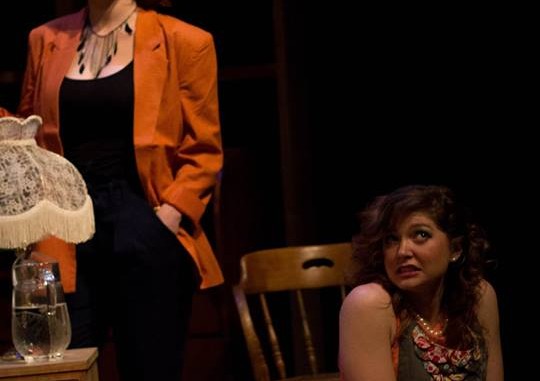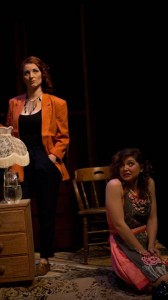
Set them free [by Matt Baker]

As a double-bill, The Cagebirds and The Collector are a clear and legitimate programming decision by Wild Boy Productions, with each play containing inherent, parallel themes of being trapped, isolation, choice, and freedom. As a Halloween double-bill, however, the choice is not totally clear – other than as a marketing gimmick.
As a text, The Cagebirds is packed with one-liner commentaries that hint at the various points of the wide-ranging socio-political spectrum the playwright perceives, which is most evident in the stereotypical caricatures. While each of the eight actresses fulfils the two dimensions of their respective characters in the script, the lack of a third in their interpretation results in a menagerie of mediocrity. The caged-bird allegory of these various women and their mistress is occasionally imbued with bird-like characterisations, but the inconsistency of it results in a lack of specificity, and the wandering accents question necessity.
While both the director, Lisa Fothergill, and her cast no doubt comprehend the depth of the play at an intellectual level, they are ultimately lacking the incredibly high calibre of talent required to present the allegorical content of absurdism. Whether interpreted under Campton’s anthology “Laughter and Fear” or theatre critic Irving Wardle’s coined “comedy of menace”, the balance of comedy and tragedy is unquestionably vital for the success of this (and other) absurdist plays. While said comedy is there, much of it exists at a surface level through affectations in the acting (excluding Esmée Myers), which prevents the tragedy from fully forming.
This is encapsulated by the fact that Fothergill’s passionate director’s notes are belied by the lack of crediting the playwright (David Campton). Such a slight illustrates an ironic lack of respect for the source material, but also a potential legal oversight. Likewise, mention of, but no official credit is given to, Mark Healy, who adapted John Fowles’ 1963 debut novel The Collector in 2008.
Like The Cagebirds ensemble, Stephen Lunt and Kat Glass have a fundamental comprehension of and ability to execute the essentials of The Collector, but director Luke Thornborough’s focus on producing emotionality results is an unoriginality of the actions they use. This is most evident when the play pulls into crazy town for the final scenes – a right that is not earned, especially with the lack of subtlety in the power dynamics of the relationship and sub-par vocal work.
The episodic narrative is jarred all the more with Amie Bentall’s sound design, which not only works against the play’s atmosphere, but seems to be nothing more than a badly executed attempt at making a “practical” scene change. Amber Molloy’s lighting design has more to play with in The Collector’s emotional journey than in The Cagebirds one-noted song, as does Sam Mence’s set design, which illustrates the psychologically broken structure of Clegg’s (Lunt’s) mind.
Traditionally, a double-bill, like any play split by an interval, will ensure that the latter-half is the shorter. This, however, is not the case, with The Collector’s 4-week narrative requiring very little suspension of disbelief as the show drags on. While the aforementioned parallel themes are evident in both pieces, so too is the lack of originality in the achingly safe direction. Wild Boy Productions have made two very bold choices, and while neither pays off in full by not reaching its potential pinnacle, there is a modicum of theatrical standard established by all practitioners involved.
The Cagebirds & The Collector is presented by Wild Boy Productions and Female Company and plays at Musgrove Studio until November 6. For details see The Maidment.


Leave a Reply